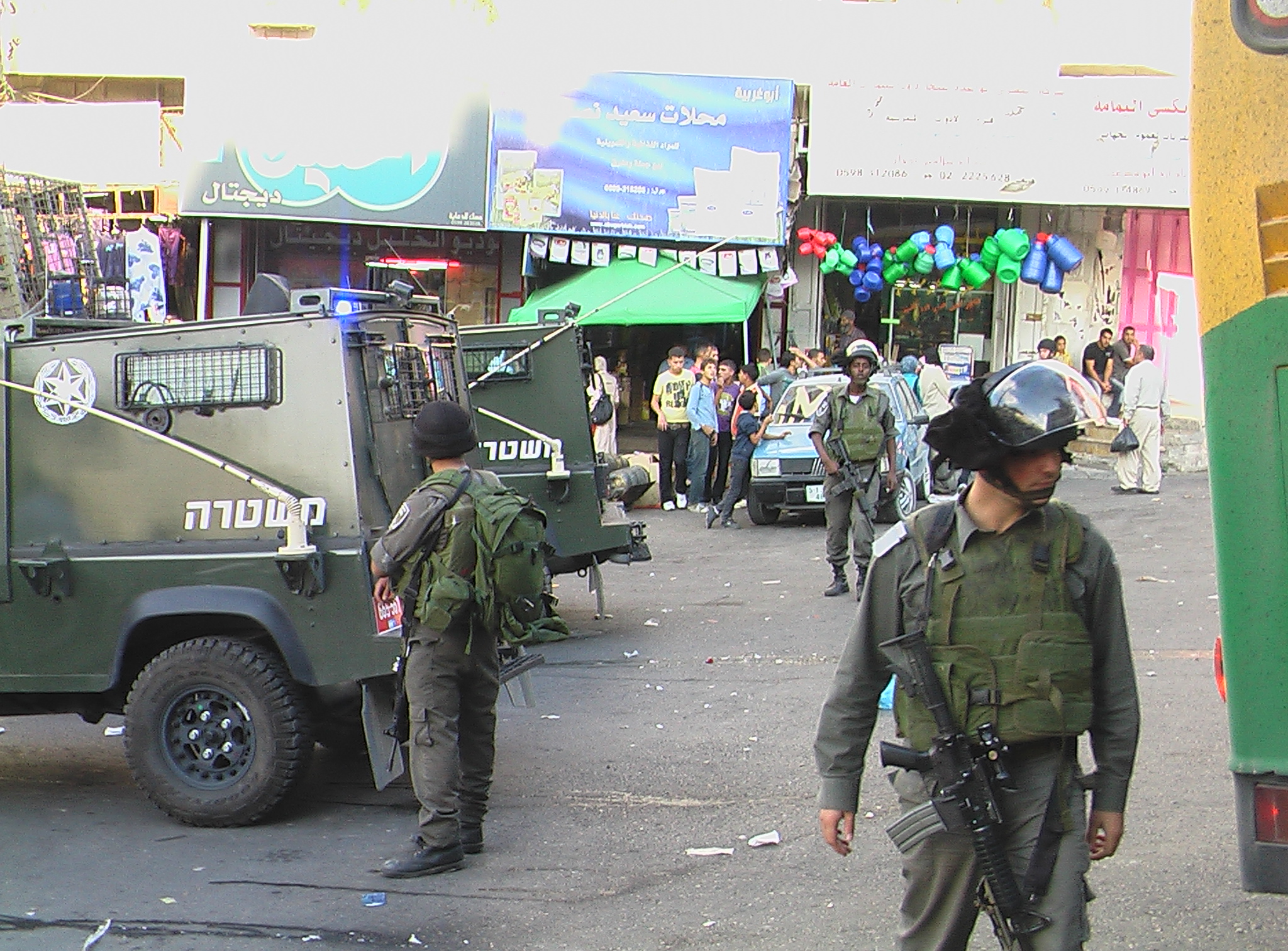Tag: Temporary International Presence in Hebron
-
The colonial parade of Hebron
18 October 2011 | Free Paly A crowded Palestinian marketplace, mid-afternoon, the sun is slowly descending, and a cool breeze blows plastic bags past the feet of a jumbled crowd of young men, small boys, women in hijab with their daughters, and old men. They have gathered, this midday mass of Palestinians, with outstretched necks…
-
Settler attacks with Molotov cocktails on Nakba day in Hebron
17 May 2011 | International Solidarity Movement A Palestinian house was attacked by settlers from the illegal settlement of Kiryat Arba in Western Hebron on May 15, the Nakba day. Jamal Abu Saifan told the International Solidarity Movement that around 6.30 pm on Sunday, four masked settlers appeared and started to throw Molotov cocktails and…
-
Hebron witnesses increase in settler harassment following al-Shuhada street demonstration
02 March 2011 | International Solidarity Movement Sunday a shop in Tel Rumeida was attacked by a middle-aged settler who smashed the shop’s window with a stick. Of the two shopkeepers inside, one was disabled in a wheelchair. The other went out and was then attacked by the settler. Soldiers from the nearby checkpoint did…

